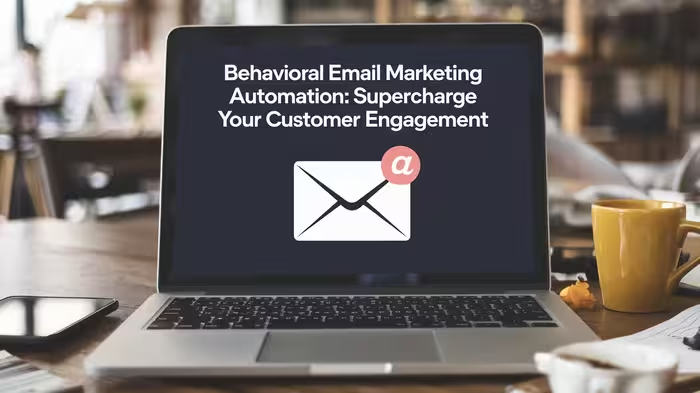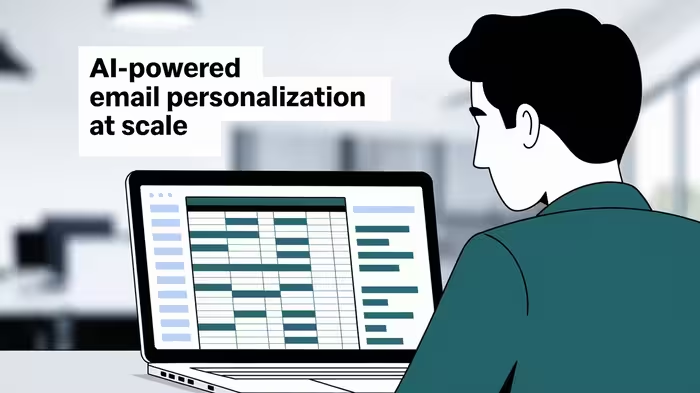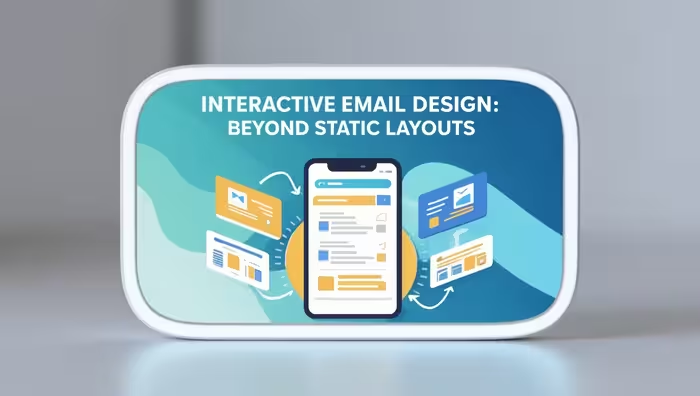Hey there, savvy marketers and business owners! Are you ready to take your email marketing game to the next level? Well, buckle up because we’re about to dive into the exciting world of behavioral email marketing automation.
It’s like having a crystal ball that tells you exactly what your customers want, when they want it. Sounds magical, right? Let’s explore how this powerful strategy can transform your marketing efforts and boost your bottom line.
What is Behavioral Email Marketing Automation?
Before we jump in, let’s break down what behavioral email marketing automation actually is. Imagine you have a super-smart robot assistant (let’s call it MailBot) that watches what your customers do on your website, in your app, or with your previous emails.
When a customer does something specific, like abandoning their shopping cart or not opening emails for a while, MailBot springs into action. It automatically sends them a perfectly timed, personalized email to nudge them in the right direction.
That’s behavioral email marketing automation in a nutshell. It’s all about sending the right message to the right person at the right time, based on their actual behavior. It’s like being a mind reader, but way less creepy and way more effective!
Why Behavioral Email Marketing Matters
Now, you might be thinking, “I already send emails to my customers. Why should I bother with this behavioral stuff?” Great question! Let’s break down why behavioral email marketing is a game-changer for businesses of all sizes.
Increased Relevance
Have you ever received an email that felt like it was written just for you? That’s the power of behavioral email marketing. By basing your emails on actual customer actions, you’re ensuring that each message is super relevant to the recipient. It’s like serving your customer’s favorite dish without them even having to order – they’ll love you for it!
Higher Engagement Rates
When emails are relevant, guess what happens? People actually open and click them! Behavioral emails typically see much higher open rates, click-through rates, and conversion rates compared to generic blast emails. It’s the difference between shouting into a crowded room and having a one-on-one conversation with someone who’s actually interested in what you have to say.
Improved Customer Retention
Behavioral emails help you stay connected with your customers throughout their journey with your brand. Whether they’re a new subscriber, a frequent buyer, or someone who hasn’t purchased in a while, you can send targeted messages that keep them engaged and coming back for more. It’s like having a loyal friend who always knows just what to say to cheer you up or celebrate your successes.
Better ROI
Here’s where things get really exciting for businesses. Because behavioral emails are so targeted and relevant, they tend to drive more conversions with less effort. This means you’re getting more bang for your marketing buck. Who doesn’t love that?
Types of Behavioral Triggers
Alright, now that we’re all fired up about the benefits of behavioral email marketing, let’s explore some common types of triggers that can kick off these smart, automated emails.
Website Interactions
Your website is a goldmine of customer behavior data. Here are some actions that could trigger emails:
- Viewing a specific product page multiple times
- Downloading a resource or whitepaper
- Signing up for a free trial
- Updating account information
Think of these triggers as little waves from your customers saying, “Hey, I’m interested in this!”
Email Engagement
How people interact with your emails can also spark automated responses:
- Opening an email (or not opening emails for a while)
- Clicking on specific links within an email
- Subscribing to your newsletter
These actions (or inactions) are like secret messages from your subscribers about what they’re interested in.
Purchase History
A customer’s buying behavior is a treasure trove of information:
- Making a first purchase
- Buying a specific product
- Reaching a certain spending threshold
- Not making a purchase for an extended period
Each of these actions tells a story about where your customer is in their journey with your brand.
Cart Abandonment
This is a big one for e-commerce businesses. When a customer adds items to their cart but doesn’t complete the purchase, it’s like they’re waving a big flag saying, “I’m interested, but something’s holding me back!” A well-timed behavioral email can be just the nudge they need to complete their purchase.
Customer Lifecycle Stages
Different emails can be triggered based on where a customer is in their lifecycle:
- Welcome series for new subscribers
- Onboarding emails for new customers
- Re-engagement campaigns for inactive customers
- Loyalty rewards for frequent buyers
These lifecycle-based emails help you nurture relationships with customers at every stage of their journey.
Setting Up Behavioral Email Automation
Now that we know what kinds of behavior can trigger emails, let’s talk about how to actually set up these smart campaigns. Don’t worry, it’s not as complicated as it might sound!
Choose the Right Email Marketing Platform
First things first, you need a good email marketing tool that supports behavioral automation. Look for platforms that offer:
- Easy-to-use automation workflows
- Robust segmentation capabilities
- Integration with your website and other tools
- Detailed analytics and reporting
Choosing the right platform is like picking the perfect dance partner – it should be able to keep up with all your smooth moves!
Define Your Goals
Before you start creating campaigns, think about what you want to achieve. Are you looking to:
- Increase sales?
- Improve customer retention?
- Boost engagement?
- Educate your audience?
Having clear goals will help you design more effective campaigns. It’s like setting a destination before you start a road trip – you need to know where you’re going to figure out how to get there!
Segment Your Audience
Not all customers are the same, so your emails shouldn’t be either. Use the data you have to create different segments based on things like:
- Purchase history
- Email engagement
- Website behavior
- Demographics
Think of segmentation like sorting your laundry – you wouldn’t wash your delicates with your gym socks, right?
Create Trigger-Based Workflows
This is where the magic happens! Set up automated workflows that send specific emails based on the triggers we talked about earlier. For example:
- When someone abandons their cart → Send a reminder email after 24 hours
- When a customer makes their first purchase → Send a thank you email with a discount for their next purchase
- When a subscriber hasn’t opened emails in 30 days → Send a re-engagement campaign
These workflows are like little robots working 24/7 to keep your customers engaged.
Design Engaging Email Content
Now it’s time to craft those perfect emails. Remember to:
- Keep it personal (use the subscriber’s name and reference their specific actions)
- Make it visually appealing
- Include a clear call-to-action
- Keep the message focused and relevant to the trigger
Think of each email as a mini-conversation with your customer. What would you say to them if you were face-to-face?
Best Practices for Behavioral Email Marketing
Alright, you’ve got the basics down. Now let’s talk about some best practices to really make your behavioral email campaigns shine.
Personalization is Key
We can’t stress this enough – the more personalized your emails are, the better they’ll perform. Use all the data at your disposal to make each email feel like it was written just for the recipient. It’s like being a thoughtful friend who always remembers your birthday and your favorite ice cream flavor.
Timing Matters
The “when” is just as important as the “what” in behavioral email marketing. Test different timing for your emails to see what works best. Sometimes sending an abandoned cart email after an hour works better than waiting a day. It’s all about finding that sweet spot!
Test and Optimize
Don’t just set it and forget it. Constantly test different elements of your emails – subject lines, content, design, timing – and use the results to improve your campaigns. It’s like being a scientist, but instead of lab coats, you get to wear your marketing hat!
Respect Privacy and Preferences
With great power comes great responsibility. Always give subscribers the option to opt-out of behavioral emails, and be transparent about how you’re using their data. Building trust is key to long-term success.
Keep It Simple and Relevant
Don’t try to cram too much into one email. Keep your message focused on the specific trigger and what you want the recipient to do next. It’s like having a conversation – stay on topic and don’t overwhelm your listener.
Measuring the Success of Your Behavioral Email Campaigns
How do you know if all this effort is paying off? It’s all about the metrics, baby! Here are some key numbers to keep an eye on:
- Open rates: Are people actually reading your emails?
- Click-through rates: Are they engaging with your content?
- Conversion rates: Are your emails driving the desired actions?
- Revenue per email: How much money is each email generating?
- Unsubscribe rates: Are people getting annoyed and jumping ship?
Use these metrics to continually refine and improve your campaigns. It’s like having a scorecard for your email marketing game!
Common Challenges and How to Overcome Them
Let’s face it, setting up behavioral email marketing isn’t always a walk in the park. Here are some common hurdles and how to leap over them:
- Data overload: Start small and focus on a few key behaviors. You can always expand later.
- Technical difficulties: Choose a user-friendly platform and don’t be afraid to ask for help when you need it.
- Content creation: Create templates and reusable content blocks to make email creation easier.
- Maintaining relevance: Regularly review and update your automated campaigns to ensure they stay fresh and relevant.
Remember, even the pros face challenges. The key is to keep learning and improving!
Case Studies: Successful Behavioral Email Campaigns
Let’s look at some real-world examples of businesses crushing it with behavioral email marketing:
- Amazon’s product recommendations: Based on your browsing and purchase history, Amazon sends eerily accurate product suggestion emails that drive significant sales.
- Netflix’s “Continue Watching” emails: These emails remind you about shows you’ve started but haven’t finished, pulling you back into binge-watching mode.
- Airbnb’s trip planning emails: After you book a stay, Airbnb sends a series of emails with local recommendations and travel tips, enhancing your overall experience.
These companies show that with the right strategy, behavioral emails can drive engagement, sales, and customer loyalty.
Integrating Behavioral Emails with Your Overall Marketing Strategy
Remember, behavioral emails shouldn’t exist in a vacuum. They should be part of your broader marketing strategy. Some ways to integrate:
- Use insights from email behavior to inform your social media campaigns
- Align your email content with your current promotions and offers
- Use behavioral data to create more targeted ads on other platforms
Think of your marketing strategy as a big puzzle, with behavioral emails being a crucial piece that helps complete the picture.
Future Trends in Behavioral Email Marketing
The world of email marketing is always evolving. Here are some trends to watch out for:
- AI-powered predictive analytics to anticipate customer needs
- More sophisticated personalization using machine learning
- Interactive emails with embedded forms and videos
- Integration with other channels for a truly omnichannel experience
Keeping an eye on these trends can help you stay ahead of the curve and keep your email marketing strategy fresh and effective.
Conclusion
Whew! We’ve covered a lot of ground, haven’t we? From understanding what behavioral email marketing is to setting up campaigns, best practices, and future trends, you’re now armed with everything you need to take your email marketing to the next level.
Remember, the key to success with behavioral email marketing is to always put your customer first. Use the data you have to create relevant, timely, and valuable experiences for your subscribers. It’s about building relationships, not just sending emails.
So, what are you waiting for? It’s time to dive in, start experimenting, and watch your engagement and conversions soar. Your customers (and your bottom line) will thank you!
FAQs
- Q: How many behavioral email campaigns should I start with?
A: It’s best to start small and build up. Begin with 2-3 key campaigns, like a welcome series and an abandoned cart reminder. Once you’re comfortable with those, you can gradually add more complex campaigns based on your business needs and customer behavior. - Q: Is behavioral email marketing only for big companies with lots of data?
A: Not at all! Businesses of all sizes can benefit from behavioral email marketing. Even if you’re just starting out, you can use simple triggers like sign-ups or first purchases to create targeted campaigns. As you grow and collect more data, you can expand your behavioral email strategy. - Q: How do I avoid coming across as creepy or invasive with behavioral emails?
A: The key is to be transparent and provide value. Let your subscribers know how you’re using their data to improve their experience. Focus on being helpful rather than just promotional. And always give people the option to opt out if they’re not comfortable with behavioral emails. - Q: How often should I review and update my behavioral email campaigns?
A: It’s a good idea to review your campaigns at least quarterly. Look at your performance metrics, check if your content is still relevant, and make sure your automation workflows are still working as intended. However, keep an eye on your metrics regularly – if you notice any significant changes, it might be time for an update. - Q: Can behavioral email marketing work for B2B companies too?
A: Absolutely! While the specific behaviors and triggers might be different, the principles of behavioral email marketing apply to B2B just as much as B2C. For example, you might send targeted emails based on which product pages a prospect has viewed on your website, or create a nurture campaign for leads who have downloaded a whitepaper. The key is to understand your B2B customer journey and create relevant triggers and content accordingly.


